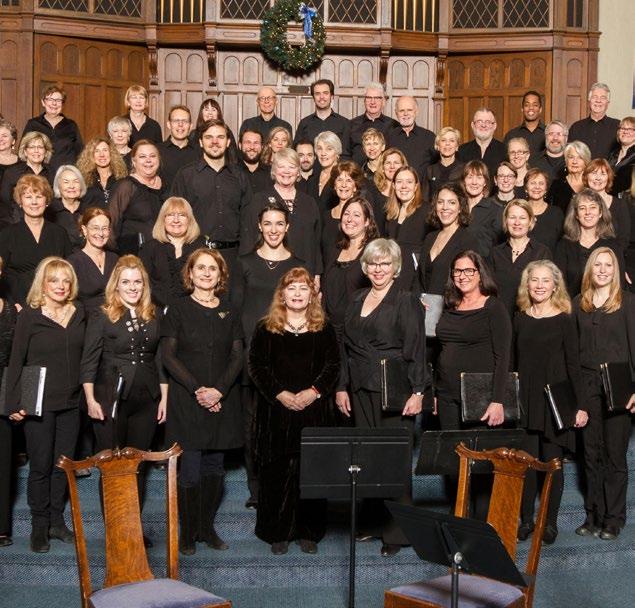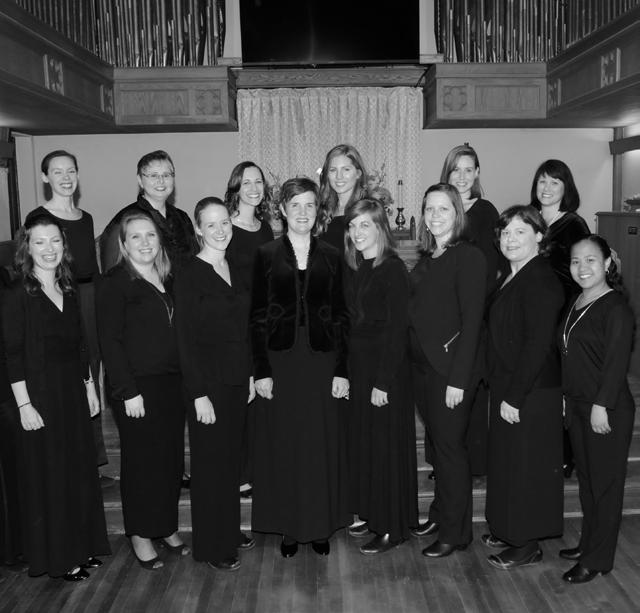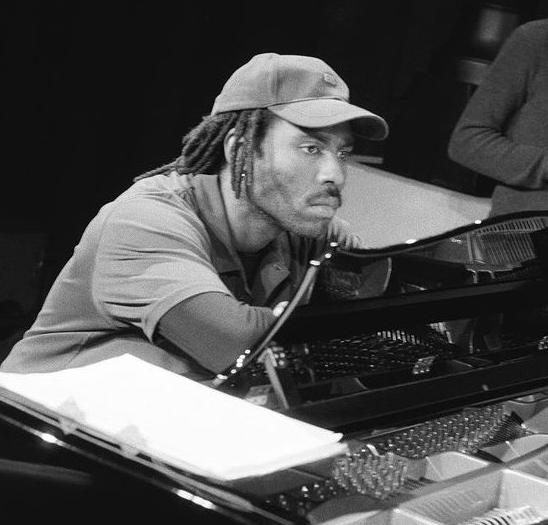EVGENY KISSIN

Piano
THU APR 27, 2023 • 8PM
JOHANN SEBASTIAN BACH (1685-1750)


THU APR 27, 2023 • 8PM
JOHANN SEBASTIAN BACH (1685-1750)
Chromatic Fantasia and Fugue in D minor, BWV 903
WOLFGANG AMADEUS MOZART (1756-1791)
Piano Sonata No. 9 in D major, K. 311
FRÉDÉRIC CHOPIN (1810-1849)
Polonaise in F-sharp minor, Op. 44
SERGEI RACHMANINOFF (1873-1943)
Lilacs, Op. 21, No. 5
Prelude Op. 32, No. 8 in A minor
Prelude Op. 23, No. 10 in G-flat Major
Études-Tableaux, Op. 39
I. Allegro agitato in C minor
II. Lento assai in A minor
IV. Allegro assai in B minor
V. Appassionato in Eb minor
IX. Allegro moderato: Tempo di marcia in D Major
Evgeny Kissin’s musicality, the depth and poetic quality of his interpretations, and his extraordinary virtuosity have earned him the veneration and admiration deserved only by one of the most gifted classical pianists of his generation and, arguably, generations past. He is in demand the world over and has appeared with many of the world’s great conductors, including Abbado, Ashkenazy, Barenboim, Dohnányi, Giulini, Levine, Maazel, Muti, and Ozawa, as well as all the great orchestras of the world.

Mr. Kissin was born in Moscow in October 1971 and began to play by ear and improvise on the piano at the age of two. At six years old, he entered a special school for gifted children, the Moscow Gnessin School of Music, where he was a student of Anna Pavlovna Kantor, his only teacher. At the age of ten, he made his concerto debut playing Mozart’s Piano Concerto K. 466 and gave his first solo recital in Moscow one year later. He came to international attention in March 1984 when, at the age of twelve, he performed Chopin’s Piano Concertos 1 and 2 in the Great Hall of the Moscow Conservatory with the Moscow State Philharmonic under Dmitri Kitayenko. This concert was recorded live by Melodia, and a twoLP album was released the following year. Given the astounding success of this recording, Melodia proceeded to release five more LPs of live performances in Moscow over the following two years.
Mr. Kissin’s first appearances outside Russia were in 1985 in Eastern Europe; his first tour of Japan in 1986; and in December 1988 he performed with Herbert von Karajan and the Berlin Philharmonic in a New Year’s concert broadcast internationally. In 1990 Mr. Kissin made his first appearance at the BBC Promenade Concerts in London and, in the same year, made his North American debut, performing both Chopin piano concertos with the New York Philharmonic, conducted by Zubin Mehta. The following week he opened Carnegie Hall’s Centennial season with a spectacular debut recital, recorded live by BMG Classics.
During the 2022-2023 season, Mr. Kissin returns to with the Vienna Philharmonic with Jakub Hrůša, the London Symphony and Simon Rattle, the Hamburg Philharmonic and Kent Nagano, and the Warsaw Philharmonic and Andrey Boreyko, among others. In January, he embarks on a recital tour of Europe with Renée Fleming performing a program of Schubert, Rachmaninov, Liszt and Duparc in Vienna’s Musikverein, Théâtre des Champs-Elysées in Paris, The Concertgebouw in Amsterdam, Lucerne’s KKL and Milan’s La Scala. The two artists take the same program on a tour of North America in May, stopping at the Kennedy Center, Chicago, The Gilmore Festival and at Carnegie Hall. Mr. Kissin also tours North America with a solo recital program featuring works by Bach, Mozart, Debussy and Rachmaninov, traveling to Chicago, Boston, Toronto and Carnegie Hall. On May 21st, he performs at a gala concert honoring the memory of Andrei Sakharov at Carnegie Hall, joined by Maxim Vengerov, Steven Isserlis and the Emerson String Quartet among other star artists.
Musical awards and tributes from around the world have been showered upon
Evgeny Kissin. He received the Crystal Prize of the Osaka Symphony Hall for the Best Performance of the Year in 1986 (his first performance in Japan). In 1991 he received the Musician of the Year Prize from the Chigiana Academy of Music in Siena, Italy. He was special guest at the 1992 Grammy Awards Ceremony, broadcast live to an audience estimated at over one billion, and three years later became Musical America’s youngest Instrumentalist of the Year. In 1997 he received the prestigious Triumph Award for his outstanding contribution to Russia’s culture, one of the highest cultural honors to be awarded in the Russian Republic, the youngest ever awardee. Mr. Kissin has been awarded an Honorary Doctorate of Music by the Manhattan School of Music; the Shostakovich Award, one of Russia’s highest musical honors; an Honorary Membership of the Royal Academy of Music in London; and an Honorary Doctorate of Letters from the Hong Kong University.
Mr. Kissin’s newest release is an album featuring Beethoven Sonatas on the Deutsche Grammophon label. His previous recordings have received numerous awards and accolades, having contributed significantly to the library of masterpieces recorded by the world’s greatest performers. Past awards have included the Edison Klassiek in The Netherlands, and the Diapason d’Or and the Grand Prix of La Nouvelle Academie du Disque in France. His recording of works by Scriabin, Medtner and Stravinsky (RCA Red Seal) won him a Grammy in 2006 for Best Instrumental Soloist. In 2002, Mr. Kissin was named Echo Klassik Soloist of the Year. His most recent Grammy for Best Instrumental Soloist Performance (with orchestra) was awarded in 2010 for his recording of Prokofiev’s Piano Concertos Nos. 2 and 3 with the Philharmonia Orchestra, conducted by Vladimir Ashkenazy (EMI Classics). Mr. Kissin’s extraordinary talent inspired Christopher Nupen’s documentary film, Evgeny Kissin: The Gift of Music, which was released in 2000 on video and DVD by RCA Red Seal.
Mr. Kissin appears by arrangement with IMG Artists New York. Mr. Kissin records for Deutsche Grammophon.
The “Chromatic Fantasia and Fugue” is one of Bach’s most daring works—and also a source of speculation and confusion. It was never published during the composer’s lifetime, and no autographs survive—only dozens of slightly differing manuscripts made by scribes and copyists who themselves appear to have been working with at least a couple of different sources. Historians believe the music was written sometime between 1717 and 1723—when Bach was Kapellmeister [OR director of music] for the young Prince Leopold, at Anhalt-Köthen, southwest of Berlin—but he likely revised it as late as 1730.
Performers have often taken liberties—especially during the Romantic era. Felix Mendelssohn, in his piano recitals, added octaves in the bass and repeated arpeggiated chords. One horrified critic lambasted Franz Liszt for storming through the piece “as if in a Bacchanalian frenzy.”
The Romantics favoured the piece because of the extremes to which it goes. The opening “Fantasia” is in three sections. The first, a toccata-like introduction, opens at full tilt—with ascending and descending flurries of rapid thirty-second notes— and seldom lets up. It gives way to a second section made up of florid arpeggiated chords. The third, a recitative, features a freely roaming solo voice accompanied by chords rather than counterpoint. The fantasia is tenuously in D minor, with startling modulations throughout—hence the term “chromatic.” One can imagine Bach, who was renowned as an improvisor, sitting at a keyboard and deploying a set of virtuoso techniques and unorthodox harmonies to prove just how far he could stretch himself and his listeners before depositing them, firmly, on a D-major chord.
The fugue is in three voices, and the chromatic motion of the theme itself—which covers 10 out of the possible 12 tones in a chromatic scale—ensures they intersect in complex and curious ways. At first, the theme ends resolutely on the tonic, but in later entries, its ending morphs into transitional passages that lead us inexorably to new keys. Rhythmically, we’re on firmer ground than in the vertiginous fantasia, but the intricacies of the voicing, the contrast of techniques, and a relentless forward motion keep us on our toes.
When Mozart wrote this sonata at age 21, he was staying with his mother in Mannheim (in what is now the southwestern German state Baden-Württemburg) and trying but failing to find employment at the court of Karl Theodor, a princeelector and count of the Holy Roman Empire.
Despite the frustrating circumstances, his stay in Mannheim may have offered “the happiest months of Mozart’s life,” as biographer Paul Johnson speculates. Far from his father’s domineering gaze, Mozart fell in love with a young soprano (whose younger sister he would eventually marry), discovered the clarinet, and befriended composers from the then-in-vogue Mannheim School.
Whether or not it reflects his state of mind, the K311 sonata is particularly jocose. The first movement is known for its unusual reordering of sonata form. Marked “Allegro con spirito,” it opens with a sprightly first theme winds that skips its way up to the tonic, D. There’s a second, more docile, theme; a charging third; and a gentle two-bar motif in descending sixths at the very end of the exposition section. In a twist, this motif provides the material for the first part of the development; after a brief visit to relative minor (B-), the third theme returns, and in the recapitulation, we revisit, in order, the second theme, and finally, the first. In short, it’s a mirrorimage movement.
The second movement is more straightforward: as in most Mozart sonatas, it’s relatively slow (marked “Andante con espressione”—expressively, at a walking pace) and in the subdominant key (G major). Its form is an alternating ABABA; the B section’s theme is fleet and lyrical, and the A section’s theme is sedate and stately—that is, apart from three staccato forte chords that come out of nowhere, as if Mozart is making sure you’re still awake. Rapidly contrasting dynamics were a hallmark of the Mannheim school, and they’re present throughout this sonata. In the third movement, a rondo marked “Allegro,” passages echo one another, sometimes more softly and sometimes much louder. Mozart plays with our expectations until, at the death, placid chords that would seek to wind everything down give way to an unexpected, abrupt, mock-triumphant ending.
Growing up in Poland, Chopin was well-acquainted with the polonaise—a slow-ish folk dance in triple meter whose rhythmic pattern goes: ♪♬♪♪♪♪ . His very first printed composition was a polonaise, credited to “Frederick Chopin, a musician aged 8.” In later years, he would stretch the form’s possibilities, and make it his own.
The Opus 44 polonaise was composed in 1840, towards the end of a period of gathering energy and inspiration for what biographer Adam Zamoyski has called “the final and greatest stage of his work.”
The piece is often nicknamed “Tragic” due to its minor-key gravitas, but it’s defiant, too. Perhaps “Dramatic” would be more accurate.
The opening theme is introduced by a tense, suspenseful motif; it sounds somehow simultaneously like a dance and a thunderstorm with orchestral accompaniment. The second theme, in B-flat minor, doesn’t so much supply contrast as double down, surging in gusts up the keyboard. We’re torn back and forth between the two themes and keys until the storm passes. What follows isn’t really a respite but an almost perversely repetitive section in which the same stuttering rhythm is played over and over with different notes—except for the insistent A that opens every bar, in octaves. It’s as if a demonic turntablist keep rewinding us back to the same starting point. The second theme barges in for a while, but then the repetitive section repeats, until— what’s this? We’re at a part of the score marked “Tempo di Mazurka.”
Here, Chopin nests one folk dance (the mazurka, also in triple meter, with the emphasis on the second beat, and the third often slightly delayed) inside another. A gentle melody rings out, and if it weren’t for the chromatic movement that recalls what’s come before, one might think we had switched streams entirely. Eventually and inevitably, the storm clouds gather again, and we’re back in the minor key, tearing through the earlier themes with even more passion. A coda slows and calms everything down … until a final, unexpected fortissimo octave sounds out, like a stab through the heart.
Lilacs, Op. 21, No. 5
Prelude Op. 32, No. 8 in A minor
Prelude Op. 23, No. 10 in G-flat Major
Études-Tableaux, Op. 39
I. Allegro agitato in C minor
II. Lento assai in A minor
IV. Allegro assai in B minor
V. Appassionato in Eb minor
IX. Allegro moderato: Tempo di marcia in D Major
Although Sergei Rachmaninoff was celebrated as a composer, it was as a touring pianist that he made his money—interpreting the work of others and showcasing his own. “Lilacs” was originally a song he wrote in 1902 for female voice and piano, with words by 18th-century poet Ekaterina Beketova about crossing a meadow to find peace among the titular flowers. Around 1913, Rachmaninoff transcribed it for solo piano. He retained its gentle, evocative nature while adding denser and more technically demanding passages near the end. The piece found favour with his fans; after he left his native Russia, one wealthy secret admirer sent him bouquets of lilacs wherever he toured.
Rachmaninoff wrote the 13 preludes, Op. 32, in 1910, to complement the 11 he had already written (10 from Op. 23, plus the famous Prelude in C# minor, Op. 3, No. 2). Together, they yielded a complete set of 24—one in each key, both major and minor, just like Chopin had written before him. No. 8 starts with the simplest of melodic motifs—“C C A.” (Think of a minor-key version of the famous theme from Beethoven’s fifth symphony, minus the first note.) Rachmaninoff modulates this motif, extends it, and builds a redoubtably complex set of variations around it, to offer a short, somewhat bombastic, demonstration of his powers of invention. The tenth of the Op. 23 preludes was completed in 1903. Marked “Largo,” it’s unusually calm, with colourful harmonies and a dreamy, impressionistic atmosphere. Although Rachmaninoff was known as a late Romantic, this work is more evocative of the music of Claude Debussy, who would start writing his own
preludes some six years later.
Rachmaninoff wrote two sets of “études-tableaux”—Opus 33 (1911) and Opus 39 (1917)—technically demanding pieces inspired by visual scenes and stories that he preferred not to reveal. However, when fellow composer Ottorino Respighi decided to orchestrate a few of them, Rachmaninoff did tell him what he had in mind. Two of these études-tableaux are on the program: the second and ninth from Op. 39.
Rachmaninoff wrote that the second, in A minor, “represents the Sea and Seagulls.” Marked “Lento assai” (very slowly), it opens with left-hand arpeggiated minor chords whose bass notes, surprisingly, evoke the “Dies Irae” funeral march that Rachmaninoff would often quote elsewhere. But gradually, they take on the character of ripples on water, over which right-hand melodies gracefully swoop in. Persistent polyrhythms—two notes in the right hand to three notes in the left— give the birds a little independence. Storm clouds gather, and the ripples turn to waves, but the unflappable seagulls survive to soar into the sunset.
Using the terms of the time, Rachmaninoff wrote that Op. 39, No. IX resembled “an oriental march”; he also noted its “similar character” to the étude-tableau Op. 33, No. IV, which he described as “a scene at a Fair.” This contrast is borne out by two markings in the score—“molto marcato” (very forcefully) at the start, and “scherzando” (playfully) in a pianissimo section of chords that skip along, twothirds of the way through. Regardless, there’s no funeral march here—this piece is fun with a triple-forte “fff.”
Etude-tableau Op. 39, No. I asks pianists to sweep their hands back and forth over the instrument at great speed, as if trying to catch a scurrying mouse. No. IV is short, sweet, and full of stealthy, scampering, staccato passages. No. V, also marked “molto marcato,” is a work of heart-on-sleeve romanticism. At times, it recalls Rachmaninoff’s eighteenth variation from “Rhapsody on a Theme of Paganini,” with a plangent melody buffeted by booming chords. When a journalist asked him about his inspiration in writing the études-tableaux, he simply said, “I do not believe in the artist disclosing too much his images. Let them paint for themselves what it most suggests.” 1
1 As quoted in Sergei Rachmaninoff: A Lifetime in Music by Sergei Bertensson and Jay Leyda. Auckland, NZ: Pickle Partners Publishing, 2017.
We are pleased to welcome 200 students from different schools and community groups to this performance through Share the Music! Share the Music, part of our Education & Outreach programming, has enabled over 27 000 youth to attend shows at Roy Thomson Hall and Massey Hall since the program’s inception in 1999. Additionally, Share the Music attendees participate in a variety of pre-show workshops and soundcheck opportunities, have access to online teacher resource guides, and more. Information for teachers is available on our website, roythomsonhall.com/sharethemusic .
Share the Music is presented by Desjardins, and made possible through many generous individual donors. To make a gift and help us to “share the music” with as many people as possible, please visit roythomsonhall.com/stm

THU


Nancy
THU
